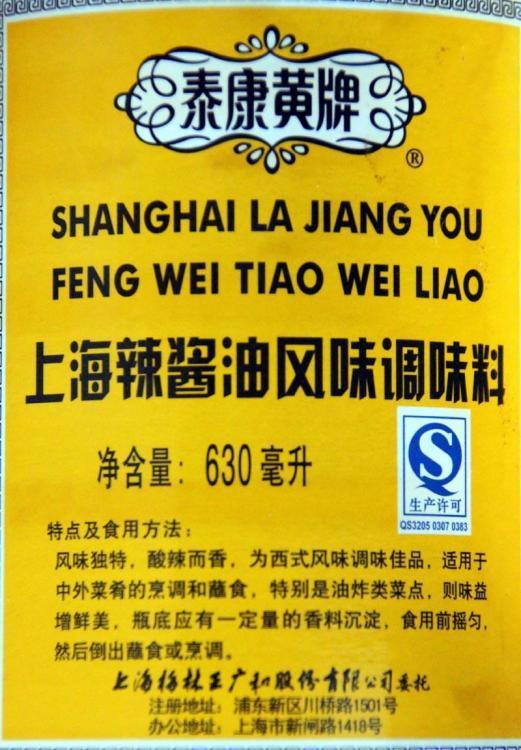This time, I'm looking at Worcestershire sauce. You're probably wondering if I am completely losing the plot. This is meant to be about Chinese ingredients – what are you doing wittering on about classic English delicacies?
Well, it may surprise you but Worcestershire Sauce is very popular in parts of China, particularly Shanghai and Hong Kong.
Lea and Perrins' accidental invention was introduced to Shanghai by the British back in the 1920s and the locals took to it, adapting it into their dipping sauces. Then they decoded the recipe and, 1930 started producing it themselves. The most popular brand in Shanghai is, no surprise, Shanghai Worcestershire Sauce. But the original Lea and Perrin's version is also available, imported via Hong Kong, I guess.

It is known in Chinese as S: 辣酱油;T: 辣醬油 - là jiàng yóu, which leads to some confusion, as 酱油 is also used to refer to soy sauce. This product contains no soy. In fact, 酱油 just means 'sauce', but the ubiquity of soy sauce in China has lead to the name almost being appropriated by just one sauce.
The Shanghai version is slightly spicier and less sweet than Lea & Perrins’ original.

The English on the bottle lists the ingredients as water, sugar, spices, salt, tomato paste, food additives (acetic acid, caramel).
The Chinese ingredients list is more forthcoming, adding dried chilli, onion, mustard seeds, tangerine peel, cape jasmine and bamboo shoot to the list.
Note the lack of anchovies, the main ingredient in the original.
In Shanghai, it is mainly used with fried, bread-crumbed pork chops or as a dipping sauce for 生煎包 (shēng jiān bāo) aka 生煎馒头 (shēng jiān mán tou) fried soup dumplings – a popular breakfast item.
PS. I've never met anyone outside Britain who can actually pronounce Worcestershire Sauce properly. The Chinese don't even try.
P. G. Woodhouse drops a huge clue, doesn't he Bertie?

